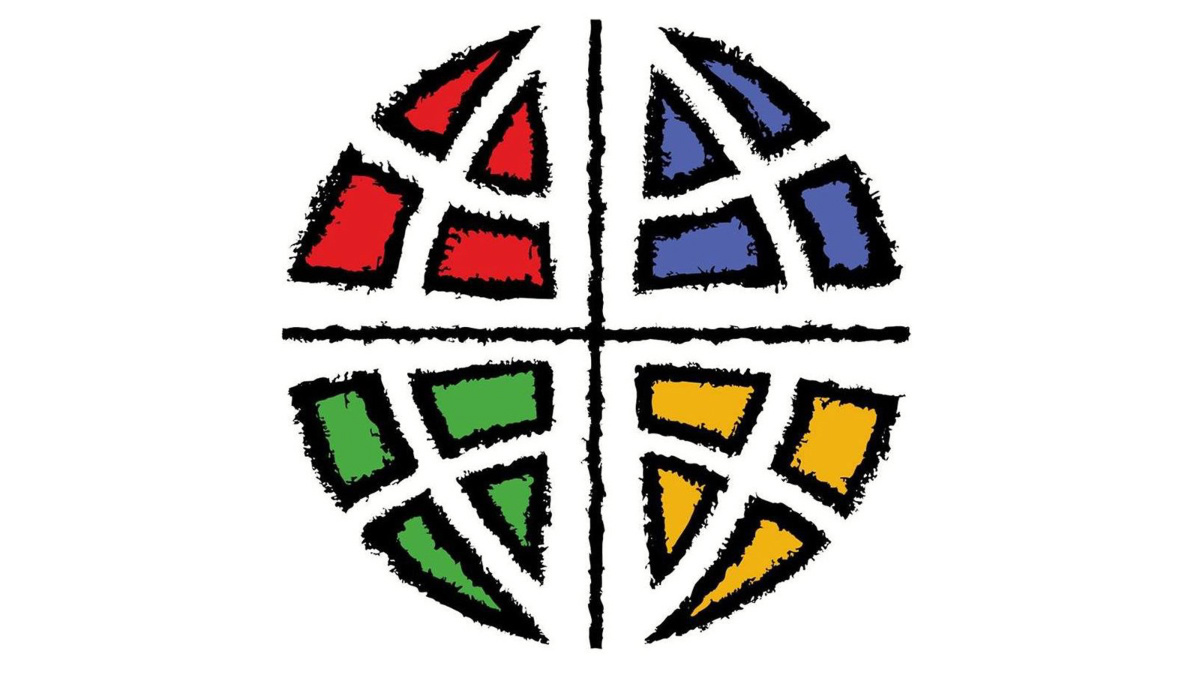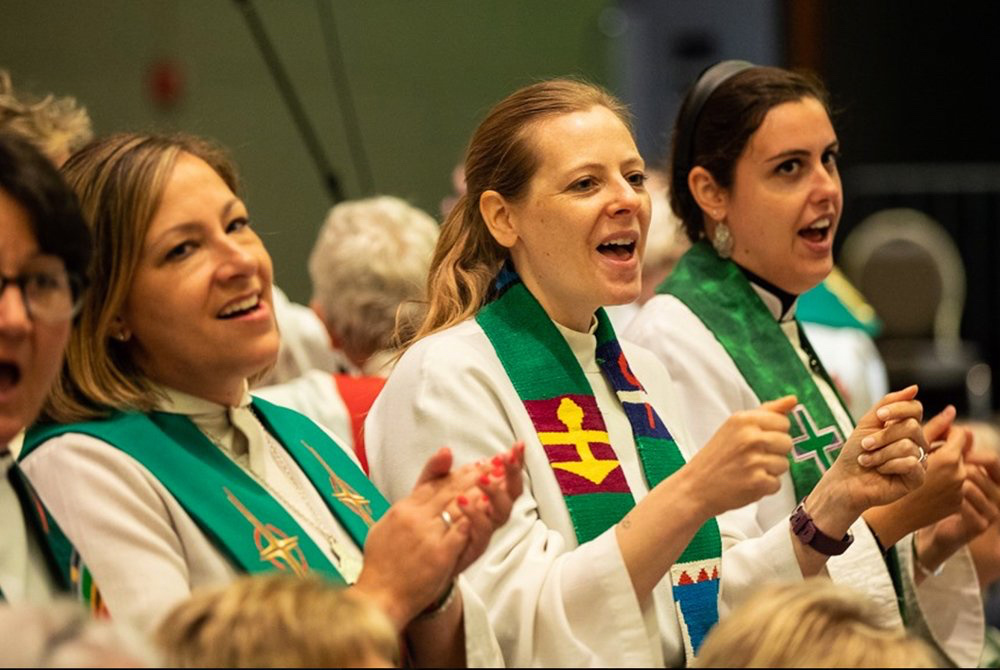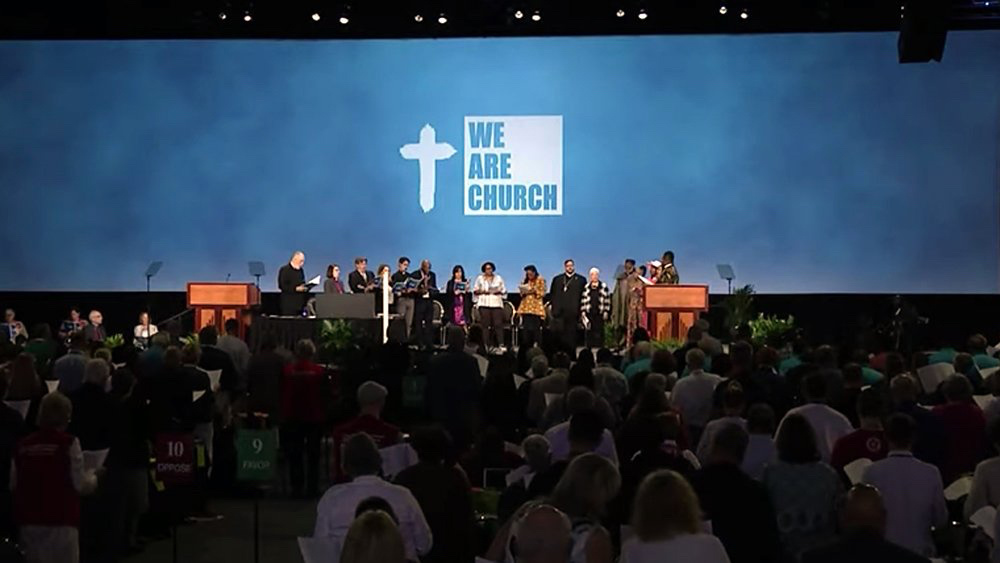It’s both the oldest and the youngest of large Lutheran denominations in the United States, by the World Council of Churches’ reckoning.

The Evangelical Lutheran Church in America logo. GRAPHIC: Courtesy ELCA
The mainline Evangelical Lutheran Church in America officially was created 35 years ago this Saturday, the result of a merger of three older denominations: the American Lutheran Church, the Lutheran Church in America and the Association of Evangelical Lutheran Churches.
Through those predecessors, the ELCA can trace its roots in the US back to 1748.
“We realised we could do a lot more together than we were doing separately and have more impact,” said Bishop Elizabeth Eaton, presiding bishop of the ELCA.
Eaton remembers being a “very young pastor” at a church outside Columbus, Ohio, when the constituting convention met 30th April 30 to 3rd May, 1987, in that city to elect the first officers.
The assembly, she said, was “pretty exciting and heady”. There was a lot of politicking over who would be elected from which predecessor body.
There were even protests. Members of DMX – a Lutheran protest group known for tactics like depositing rotting fish and spraying skunk oil in banks – tried to force their way onto the floor of the assembly. During the melee, the assembly broke into Protestant Reformer Martin Luther’s famous hymn A Mighty Fortress, which Eaton says now “maybe was not the best choice.”
But many ELCA pastors today have no memory of those predecessor bodies, Eaton pointed out. They may not have been born until after the merger.

ELCA female clergy participate in a service celebrating 50 years of women’s ordination during the ELCA Churchwide Assembly on 9th August, 2019, in Milwaukee, Wisconsin. PICTURE: Courtesy of ELCA
One of those pastors is the Rev Lenny Duncan, author of Dear Church: A Love Letter from a Black Preacher to the Whitest Denomination in the US, who became Lutheran in the 2000s.
Duncan praised the ELCA’s decision to become a “sanctuary church body” in 2019, as well as its response after Dylan Roof, a member of an ELCA congregation, killed nine people at a 2015 Bible study at Emanuel African Methodist Episcopal Church in Charleston, South Carolina.
But, Duncan said, the denomination hasn’t done enough to act on the statements it has made or to tackle white supremacy, the “great call of the church” at this time, Duncan said.
“I want the church to be the sweet nard. I want it to be the public’s conscience,” Duncan said. “You do that by being in the street with the public. You don’t do that with statements. You don’t do that with video. And you don’t do that by not showing up.”
More progressive Lutherans see “inherent racism” in the structure of the denomination, Duncan added. Meanwhile, more conservative Lutherans see the denomination as too progressive.
“We’re ripe for schism,” Duncan said.
Eaton admits the ELCA faces some significant challenges; in particular, after 35 years of efforts to diversify, the denomination remains one of the whitest in the country.
It held contentious churchwide assemblies in 2005, 2007 and 2009, when delegates voted to allow gay and lesbian Lutherans in committed relationships to serve as clergy. “We spent years arguing about sex,” she said. Afterward, hundreds of churches left the denomination.
And – although she said she’s sure the ELCA is viewed as “very liberal,” and clergy tends to skew more progressive than their congregations – the way the denomination is organized, individuals do not have to accept any of its social teachings.
For better or worse, Eaton said, that was the vision when the American Lutheran Church, the Lutheran Church in America and the Association of Evangelical Lutheran Churches merged to form the ELCA.

The ELCA Churchwide Assembly on 6th August, 2019, in Milwaukee. PICTURE: Video screen grab
Many Lutheran churches still were speaking the languages of the European immigrants who brought their faith to the US until they began to merge in the 20th century, according to Rev Lowell Almen, the longtime secretary of the ELCA, who was elected at the constituting convention.
Four churches of German, Norwegian and Danish descent had merged in 1960 to form the American Lutheran Church. Four more German, Danish, Finnish and Swedish churches had merged in 1962 to form the Lutheran Church in America. Each brought their own histories, their own way of doing things.
Critics at the time panned the 1987 formation of the ELCA as “just another big corporate merger,” Almen said.
We rely on our readers to fund Sight's work - become a financial supporter today!
For more information, head to our Subscriber's page.
And even its biggest cheerleaders couldn’t have predicted the rise in secularism that has impacted membership in denominations across the US. ELCA membership was about 5.3 million in 1987, according to the Association of Religion Data Archives. That dropped to 3.3 million in 2020, according to the ELCA.
But the denomination’s “deep and profound” commitment to ecumenism has endured, he said.
“I think the history of the ELCA is the history of both ecumenical awareness and ecumenical commitment in highly substantive ways. It’s not just a matter of smiling across the table, being nice to each other,” Almen said.
Today the denomination has six full communion partners and is part of the Lutheran World Federation, Eaton noted.
It has set an ambitious goal to engage one million “new, young and diverse” people by the end of the decade.
And its message – which the presiding bishop described as an emphasis on salvation as a gift from God that frees Lutherans to act in the world – resonates, she said.
“There’s always room in God’s house,” Eaton said.
This article contains an affiliate link.






